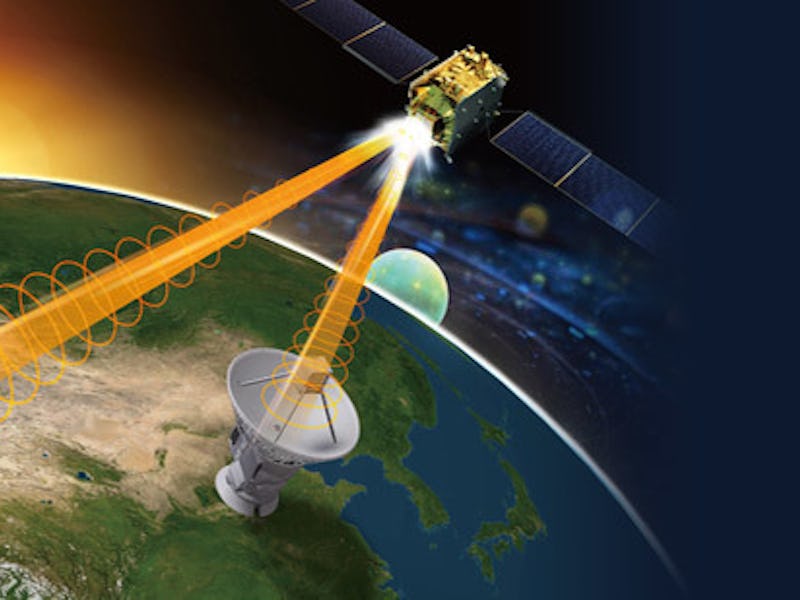With New Satellite, China Leads the World in Quantum Entanglement
How the Micius quantum laser satellite is helping to invent the quantum internet.

Recently, a team of Chinese scientists pulled off quantum teleportation from Earth to space. And a related team of Chinese scientists achieved quantum entanglement over the longest distance ever measured. China’s quantum scientists are blowing their competition out of the water, establishing their position at the forefront of the field and cementing their lead in the global race to invent the quantum internet.
Part of the reason for their epic lead is because they’ve got a one-of-a-kind quantum satellite called Micius (墨子).
China uses Micius to explore the basic science necessary to build the “quantum internet” — a hyper-secure, superfast network, operating with the aid of the spookiest quantum mechanics, that could one day supplant or augment our current world wide web.
Entangled particles are essentially one particle that exists in two places.
Micius is a sophisticated, orbiting array of lasers, crystals, and photon detectors that allows scientists to study quantum entanglement — the physical phenomenon at the heart of teleportation. Two entangled particles are basically one particle that exists in two places. Whatever information one contains, the other does as well. And if you observe that information on one particle, whoever has the second particle can tell that you’ve done so.
That makes entangled particles super valuable for encryption. If you, for example, send one group of particles to Chicago and all their entangled pairs to New York City, then have correspondents in each city read the information that those particles contain, that information becomes a “key” that your correspondents can use to encrypt data and send it back and forth. They can do so secure in the knowledge that no one else can read it — because if someone in Cleveland had intercepted the particles and read the key, it would change the particles in ways the Chicagoan and New Yorker could instantly detect.
Similarly, entangled particles can be used to send dense packets of quantum information — qubits — back and forth. (This is the phenomenon that gets called quantum teleportation, even though no physical particles actually get teleported in the process.) Qubits are much more data-rich than the conventional bits used by modern computer networks. A large-scale qubit network could, theoretically, send more information much faster.
But scientists who have attempted to do this inevitably run into a basic physics challenge: It’s really hard to reliably transport entangled particles far away from each other. Fiber-optic networks can destroy them over long distances, and even open air created fuzzing interference. Most existing, experimental quantum networks aren’t any larger than a single laboratory. And until recently, no one had transported entangled particles farther apart than about the distance from San Francisco to Sacramento, California.
But Micius has recently proved that massive-scale teleportation of entangled particles is possible. Its super-accurate transmitters can split laser beams and send entangled photons down to two different receivers on Earth, separated by hundreds of miles. Its receivers have detected entangled photons from Earth in order to pull off the longest-distance quantum teleportation (that is, a qubit upload) in human history.
There are huge obstacles still standing between our species and a true quantum internet. But the work China is doing with Micius is solving the most basic problem involved: massive distances.
That’s a very big deal.